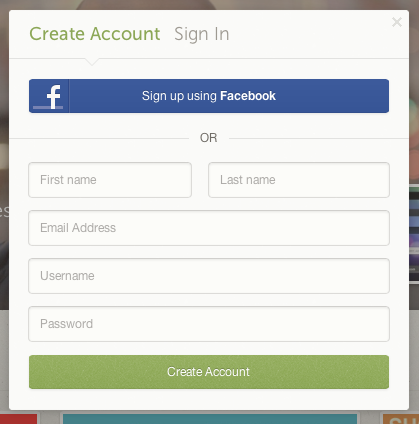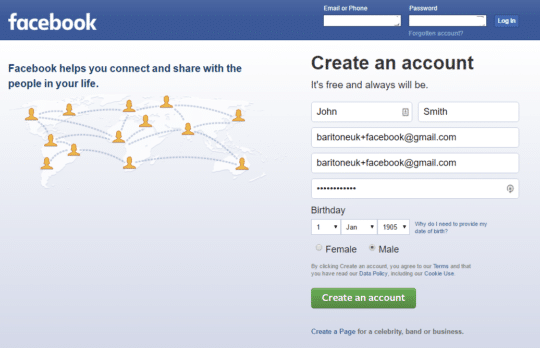

Once your account has been created, click " My Apps" from the top menu bar. If you do not have one already, you will need to create a Facebook for Developers account.Ĭlick on the Facebook for Developers link in Step 1, then click " Get Started" at the top right corner of the page.
#Facebook sign up or log in registration
This link will take you to a registration article. Click the blue " Click here" link toward the bottom of the window. Next, click on the grey " Incomplete" button to the right of the " Disable" button.Ī pop-up window will appear. A pop-up will ask if you are sure you want to enable it. Scroll down to the Facebook box and click the blue " Enable" button. In order to activate this button, you will need to activate API keys for Facebook. Once they have created an account using the Sign Up With Facebook button, they can log in using the same buttons on the " Sign In" page. This simplifies the account creation process for users who prefer to use a connected account instead of creating a new account. When a new customer creates an account with your business, you can offer the option for them to sign up with an existing Facebook account.
#Facebook sign up or log in how to
How to set up Facebook as a method of logging in for customers.The use of social logins can make the registration (or subscription) process faster, but you also lose control over a third party, so I would consider all the pros and cons before enabling it to my web app.The purpose of this article is to help you understand: If your business is B2B a traditional email/password signup si absolutely mandatory over the social login options. Last, but not least, Google provides 100% accurate data, in comparison with Facebook and Twitter. Regardless of whether your app is offering Facebook, Twitter, or both, your users are going to sign in using the social they care less, so 30,000 users later, and looking back we would have used Google as the unique authentication option on Cruip! On-boarding a user without an active email is useless, so Facebook is safe for our users, but a problem for us! In the end, Google is the best option for both of us 1 out of 10 users who sign in using Facebook has an absent or invalid email - basically, they haven’t used the social for years.

Why? Unlike Twitter, Facebook isn’t very popular among our target, so they choose it as the “safest” option to sign in to Cruip. So, are Google and Facebook the best options for our users?Ĭertainly for the users, but not for us. These numbers can be different if you have a different product and target, but overall, what we discovered is that users tend to not login with their favorite social networks, so that’s why Twitter ended up being as the less popular option on Cruip- our target (startups, founders, and developers) love Twitter and use it on a daily basis. When we started Cruip we weren’t sure if we wanted to offer traditional email/password signup, or social logins to authenticate our users! In the end, we opted for just social logins (via Google, Twitter, and Facebook), and 30,000 users later, this is what we learned: Google, Twitter, or Facebook, what do users prefer?Īccording to our stats, users prefer Google (70.97%), followed by Facebook (19.69%), and then Twitter (9.32%) to sign in to Cruip.


 0 kommentar(er)
0 kommentar(er)
